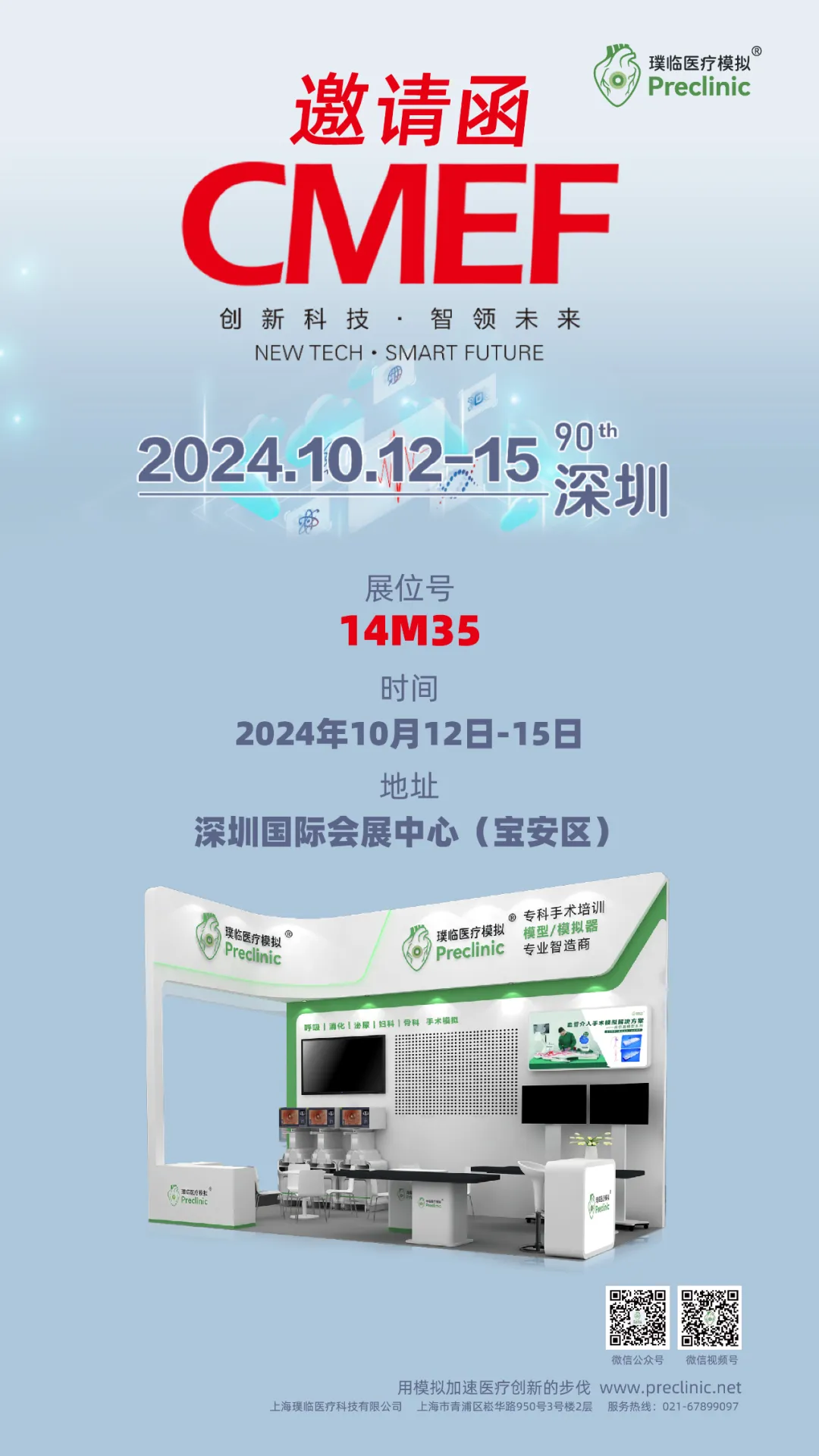璞临医疗科技诚邀您参加第90届CMEF中国国际医疗器械 (秋季)博览会
2024年10月12-15日,深圳国际会展中心将举办第90届中国国际医疗器械博览会等多场医疗领域展会。璞临携最新产品参加此次盛会,诚邀新老客户莅临位展位参观交流!
璞临医疗科技在此次CMEF盛会上将展示动静脉全身血管模拟系统,本套血管模型借助匹配的脉动泵、压力传感器等设备,模拟血管腔内血流压力、流量、温度等血流物理状态。可搭配模拟DSA设备、模拟造影剂等,获得与真实临床血管显像接近的视觉效果。用于血管介入手术的临床培训及新型器械研发,通过模块化的病变交替使用,进行多种血管疾病的介入手术模拟体验。此外,璞临还将携其他高仿真模型和模拟器亮相此次盛会!
流行的医疗模拟器
医学模拟器相关文章



